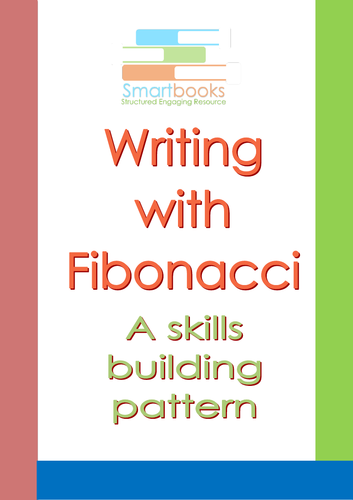
One of the difficulties that students encounter when faced with a writing task in English is how to get started and then cohesively develop that thought. I find that many of them, especially younger students, rebel at the idea of rigorous planning and drafting, just wanting to get it down. Others face a barrier of fear.
I came across the idea of using the Fibonacci sequence for extended and creative writing by accident when searching an online thesaurus. I immediately saw the sense in it and decided to apply it in the classroom. It worked. It solved the problem. There was now a way to plan, draft, develop and craft in small pieces that led to a satisfying cohesive whole. Some were amazed at just how much they could write and how they could creatively extend their writing in terms of thought provoking discussion. In lower ability classes it provided an element of fun and removed the daunting prospect of extended writing with higher word counts. In the higher ability groups it opened up the channel for students comfortably working at grade ‘C’ to move out of that comfort zone and stretch upwards towards the A* that so many of them had the potential to reach.
When I analysed the results I found that two things contributed to the success.
1. The fact that a piece of extended writing is built step at a time through developing levels of skill. This encouraged confidence.
2. The framework encouraged the skill of planning, drafting, and editing. Choosing the right words and the most effective order of words, within a gradually increasing number of words, developed vocabulary, sentence structure, and lifted the content away from basic repetition of facts. Students had the confidence to ‘craft’ their writing.
The resource that follows uses an example in which the students can engage collaboratively. There is then an individual assignment for them to complete using the sequence. As it stands it fits criteria suited to the ‘gifted and talented’ of Key Stage 3, and will be of value in Key Stage 4 to move those ‘C’ grade learners out of their comfort zone and stretch them upwards. However, it can be adapted quite easily for students of lower ability. Post 16 students who achieved low grade GCSE and need to either re-sit or complete Functional Skills English at level 2 will also find this pattern helps build their skills.
The resource has been designed in a workbook format. However, it doesn’t have to be used that way. It can be copied and pasted onto a presentation for whole class collaborative discussion and writing projects. Each page has been formatted so that it stands alone and therefore can be photocopied separately and used at appropriate times in the lesson (s). It has been left in Microsoft Word format so that it is editable by teachers who wish
Something went wrong, please try again later.
A well-produced resource that has been extremely successful with my learners in preparing them for their writing assessments, thank you.
Report this resourceto let us know if it violates our terms and conditions.
Our customer service team will review your report and will be in touch.
